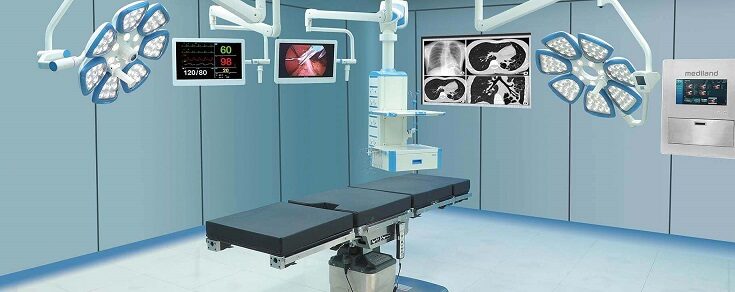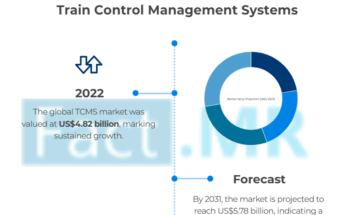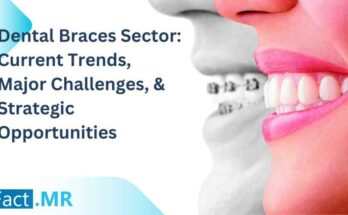Medical pendants, also known as medical pendant systems or medical supply pendants, are equipment used in healthcare settings, primarily in hospital rooms and operating theaters. They are designed to provide a centralized and organized solution for the management and delivery of medical gases, electrical power, communication systems, and other essential medical equipment.
Exploring the World of Medical Pendants
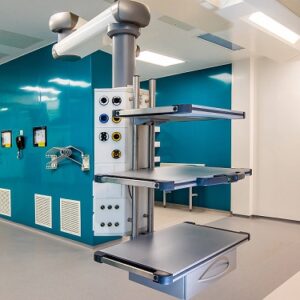
Benefits of Medical Pendants
1. Convenience and Efficiency: Medical pendants offer a convenient and efficient way to access medical gases, electrical outlets, and other necessary equipment. They provide a centralized location for medical staff to easily reach and control various medical devices and supplies.
2. Space Optimization: By suspending medical equipment and supplies from the ceiling, medical pendants help to optimize the use of space in healthcare facilities. They eliminate the need for bulky storage units or carts, freeing up valuable floor space for other purposes.
3. Enhanced Patient Care: With medical pendants, medical professionals can have immediate access to critical resources at the point of care. This allows for quicker response times, reducing the risk of delays in emergency situations or during medical procedures. It also enables healthcare providers to focus more on patient care and less on searching for equipment or supplies.
4. Flexibility and Customization: Medical pendants are often customizable to meet the specific needs of different healthcare environments. They can be configured with different types of gas outlets, electrical sockets, communication systems, and equipment hooks to accommodate the requirements of various medical specialties.
Current Demand for Medical Pendants
The demand for medical pendants has been steadily increasing in recent years. The growing emphasis on patient safety, workflow optimization, and infection control in healthcare settings has contributed to the adoption of advanced medical infrastructure solutions, including medical pendants. Additionally, the rising number of hospital renovations and new healthcare facility constructions worldwide has further fueled the demand for these systems.
According to Fact.MR’s latest report, the Medical Pendant Industry expects a US$ 529 million valuation in 2023. The comprehensive report discusses country/ category-wise Insights, competitive analysis, leading manufacturers’ strategies & much more.
The COVID-19 pandemic has also underscored the importance of efficient and well-equipped healthcare environments, driving the need for medical pendants to enhance patient care and infection prevention measures.
The current demand for medical pendants is driven by the desire for improved healthcare infrastructure, streamlined workflows, and enhanced patient outcomes.
Different Types of Medical Pendants
The Medical Pendants are known by many other names, some of the popular ones include:
2. Medical Equipment Suspension Systems
3. Clinical Pendant Solutions
4. Healthcare Infrastructure Pendants
5. Patient Care Pendant Systems
6. Hospital Pendant Units
7. Medical Supply Suspension Systems
8. Clinical Equipment Hanging Solutions
9. Healthcare Pendant Modules
There are several different types of medical pendants available, each designed to serve specific purposes and meet the unique requirements of healthcare settings.
Here are some common types of medical pendant systems:
1. Single-Arm Pendant: This type of pendant consists of a single arm attached to the ceiling, allowing medical devices and equipment to be suspended and easily accessed. It is commonly used in patient rooms, examination rooms, and smaller healthcare facilities.
2. Double-Arm Pendant: Double-arm pendants feature two arms that can be independently adjusted and positioned. This allows for greater flexibility in organizing medical equipment and supplies. Double-arm pendants are typically used in operating rooms, intensive care units (ICUs), and other critical care areas.
3. Bridge Pendant: Bridge pendants are designed with a horizontal bridge or beam that spans across the room. Medical equipment and devices can be mounted on the bridge, providing easy access from multiple locations within the room. Bridge pendants are commonly found in operating theaters and hybrid catheterization labs.
4. Equipment Management Column: This type of medical pendant consists of a vertical column that houses multiple shelves, drawers, and compartments for storing medical equipment and supplies. It offers a compact and organized solution for equipment management and is often used in emergency rooms, trauma centers, and other high-volume areas.
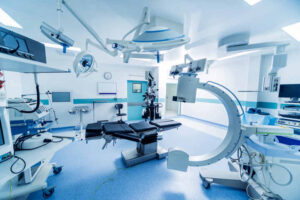
5. Anesthesia Pendant: Anesthesia pendants are specifically designed for operating rooms and provide an organized and accessible setup for anesthesia equipment and gas supply. They typically feature gas outlets, electrical sockets, shelves, and hooks for securing anesthesia machines, monitors, and other related devices.
6. ICU Pendant: ICU (Intensive Care Unit) pendants are designed to meet the unique requirements of critical care settings. They typically incorporate multiple arms or a bridge system to accommodate various medical devices and equipment needed for monitoring and life support. ICU pendants often include gas outlets, electrical sockets, medical gas control panels, and communication systems.
These are just a few examples of the different types of medical pendant s available. The choice of pendant type depends on the specific needs and layout of the healthcare facility, as well as the intended use and functionality required in different areas of patient care.
Growing Demand for Medical Pendants (Reason)
The growing demand for medical pendants can be attributed to several factors:
1. Enhanced Workflow Efficiency: Healthcare facilities are recognizing the need for streamlined processes and improved efficiency. The demand for medical pendants stems from their ability to optimize workflow by providing easy access to essential equipment and supplies, reducing time wastage and increasing productivity.
2. Optimal Space Utilization: With the growing demand for healthcare services, space is becoming a precious commodity. Medical pendants offer a solution by efficiently utilizing vertical space, allowing for better organization and utilization of limited floor space. This increased demand is driven by the need to maximize the available space in healthcare settings.
3. Improved Patient Care: The demand for medical pendants is fueled by the desire to enhance patient care. By providing quick and convenient access to critical resources, medical pendants enable healthcare professionals to respond promptly to patient needs. This demand for improved patient care drives the adoption of medical pendant systems.

4. Customization for Specialties: Different medical specialties have unique requirements when it comes to equipment and supplies. The demand for medical pendants arises from the need to customize and configure pendant systems to meet the specific needs of various specialties. This customization allows healthcare facilities to provide specialized care and cater to the diverse demands of different medical disciplines.
5. Infection Control Measures: Infection control is a critical aspect of healthcare settings, especially in the wake of the COVID-19 pandemic. The demand for medical pendants has surged as they contribute to infection control efforts by reducing the contact between equipment and surfaces. This demand is driven by the need to maintain a clean and safe environment for patients and healthcare professionals.
6. Technological Advancements: The demand for medical pendants is influenced by technological advancements. The integration of smart features, such as touch-screen controls and automated equipment tracking, has increased the demand for these systems. Healthcare facilities seek technologically advanced solutions that can improve efficiency and provide better patient care.
7. Increasing Focus on Patient Safety: Patient safety is a top priority in healthcare settings. The demand for medical pendants is driven by the need to enhance patient safety by reducing the risk of equipment-related incidents and falls. These pendant systems ensure that essential devices and supplies are within easy reach, minimizing the need for healthcare professionals to leave patients unattended.
8. Aging Population: The increasing demand for healthcare services due to an aging population is another factor driving the demand for medical pendants. As healthcare facilities cater to a larger number of patients, there is a greater need for efficient infrastructure solutions. The demand for medical pendants arises from the need to handle the growing patient load effectively and provide quality care.
Key Businesses Manufacturing Medical Pendants
As cited in the report by Fact.MR, the following are the leading manufacturers involved in fulfilling the demand for medical pendant systems.
- Elektra Hellas S.A
- Surgiris
- MEDIMAXKOREA
- Tedisel Medical
- Brandon Medical Co. Ltd
- Skytron LLC
- Ondal Medical Systems GmbH
- Starkstrom
- BeaconMedaes
- Megasan Medik
Conclusion
The demand for medical pendant systems is fueled by the need for improved workflow efficiency, optimal space utilization, enhanced patient care, infection control measures, customization for specialties, technological advancements, patient safety concerns, and the increasing healthcare needs of an aging population.
Also Read:

